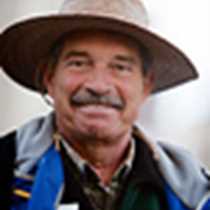Isla San Marcos & Santa Rosalia, Baja California Sur, Mexico
In the middle of the Gulf of California, where ships or boats are seldom seen, we visited Isla San Marcos. This island is of great importance to Mexico, as it contains a large open mine of gypsum, which is worked and sent mostly to the United States. Here we kayaked and cruised by Zodiac along the coast, enjoying the different colors of the rocks of the island, all of volcanic origin. Some of us saw dead dolphins on the beach, and we landed next to them to see the carcasses. They were all bottlenose dolphins. Also to be seen (and smelled) were a series of big Humboldt squid, partially eaten by the great number of gulls and turkey vultures. Among the rocks were dried-out sea stars and urchins, as well as a series of bird and mammal bones - all interesting!
In view of San Marcos Island was the small town of Santa Rosalia, set at the coast of the Peninsula, with a tremendous history. This was a copper mining town, where a French company, El Boleo, produced enormous quantities of copper during the end of the 1800’s and the first half of the 1900’s. Eventually the copper ran out, though they still smelted this element from mineral brought in by ship from the mainland, and by 1985 the facilities were closed.
We visited the typical French town, with a lovely iron church designed and made by M. Gustave Eiffel. Another typical place we all visited was the bakery, founded in 1901, where a good number of different forms of sweet breads were purchased.
In the middle of the Gulf of California, where ships or boats are seldom seen, we visited Isla San Marcos. This island is of great importance to Mexico, as it contains a large open mine of gypsum, which is worked and sent mostly to the United States. Here we kayaked and cruised by Zodiac along the coast, enjoying the different colors of the rocks of the island, all of volcanic origin. Some of us saw dead dolphins on the beach, and we landed next to them to see the carcasses. They were all bottlenose dolphins. Also to be seen (and smelled) were a series of big Humboldt squid, partially eaten by the great number of gulls and turkey vultures. Among the rocks were dried-out sea stars and urchins, as well as a series of bird and mammal bones - all interesting!
In view of San Marcos Island was the small town of Santa Rosalia, set at the coast of the Peninsula, with a tremendous history. This was a copper mining town, where a French company, El Boleo, produced enormous quantities of copper during the end of the 1800’s and the first half of the 1900’s. Eventually the copper ran out, though they still smelted this element from mineral brought in by ship from the mainland, and by 1985 the facilities were closed.
We visited the typical French town, with a lovely iron church designed and made by M. Gustave Eiffel. Another typical place we all visited was the bakery, founded in 1901, where a good number of different forms of sweet breads were purchased.



